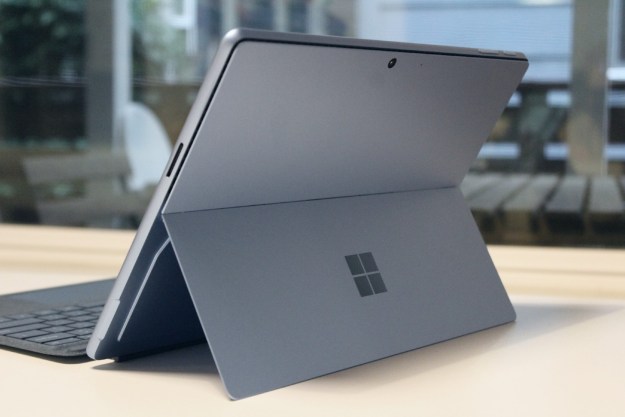
That’s what we wrote last July, when the new OS was finally released to consumers. Reviews from every major tech site echoed our opinion, heaping praise on Microsoft’s newest, sleekest, fastest, most secure OS to date.
So why the hell is everyone complaining?
Microsoft really wants to update Windows, and you should let it
Reports circulated over the past few days that users are being upgraded to Windows 10 without their knowledge or permission, a situation sure to alarm and infuriate anyone. Woody Leonhard at InfoWorld claims Microsoft tried to foist it onto a Win 7 test system; Patrick Klepeck at Kotaku wrote yesterday that his Win 7 system upgraded itself as well – then immediately broke.
“Disaster struck almost immediately,” Klepeck said.
Let me be clear. That’s not the way it should work, and Microsoft needs to be careful in order to keep an angry few from becoming an angry everyone. There’s still some mystery here, sure, but the most likely scenario is that Windows Update is offering to install the software, and folks are simply clicking through the license agreement as you’d swat away a fly or dismiss an annoyance. Whoops! Here comes Windows, like it or not!
Related: Parallels Power Bundle Promo

If you aren’t interested in a faster, more secure, improved experience, you can completely opt out. Turn off Windows Update and it won’t upgrade you. It’s that easy. It’s not ideal because you’ll miss out on security updates, of course, but if you’re interested in that sort of stuff, maybe consider Windows 10? Alternately, to prevent this from happening, ensure that Windows Update “KB 3035583” is not selected in Windows Update. You can also download GWX Control Panel, freeware to help you prevent the upgrade, and coast in your Windows 7 wonderland while you can.
Microsoft really, really wants you to upgrade, and I can’t think of a good reason why you shouldn’t.
Things have changed. Windows 10 made everything dramatically better. It’s faster, smoother, and that dippy tiled interface no longer takes over the system. There are hardcore features for power users, but it’s better at ordinary stuff, too. It’s great. To echo Satya Nadella, I’ve gone from using Windows to wanting Windows.
I’ve used the Surface Book since Microsoft released it, and the OS works minor wonders all the time. The system boots in seconds, and Windows Hello automatically recognizes my face and logs me in far faster than my wife can log in on her Apple Macbook Pro. And give Microsoft credit for pushing touchscreens – they’re incredibly convenient. Pundits used to complain about the transition between typing and touching, as if it were hard to do. Most of the time, after typing an email or navigating to a webpage, I switch to a touch interface. It isn’t hard.

Microsoft is unquestionably eager to upgrade users to Windows 10, and its target of 1 billion users looms large. After about six months, the OS is installed on 12.82 percent of computers, according to Net Market Share. That’s well above Windows XP, and now above Windows 8 as well. The challenge is converting all of the Windows 7 PCs out there.
Win 7 was a great OS, but there are some vital reasons Microsoft wants to get everyone updated to the latest version of the software. Security tops that list, but there’s also the challenge of supporting thousands of different types of computers across different operating systems written years and years ago.
Botched updates, user error, and more
There are many reasons why you wouldn’t upgrade to Windows 10, chief among them if you work for a large company and your IT department says that you shouldn’t. Software compatibility is a problem, of course. Listen to your IT folks! Usually, anyway.
I’ve gone from using Windows to wanting Windows.
“I needed to set up my department’s bronchoscopy cart quickly for someone with some sick lungs. I s**t you not, when I turned on the computer it had to do a Windows update.”
That’s a terrible situation, and it is no way Microsoft’s fault. Frankly, the IT department at this hospital should be fired. Mission critical equipment should be treated as such! This could have been prevented through smarter use of the Group Policy Editor.
The big problem here is how Microsoft has gone about things. The company announced in October a change of status for the update: “Early next year, we expect to be re-categorizing Windows 10 as a ‘Recommended Update’.”
That happened in early February, and the company has recently taken it a step further, downloading the hefty installation files in the background on some computers to ease the process. And much like an overzealous host, Microsoft isn’t just offering the upgrade: it’s insisting. Users who aren’t interested have already dealt with persistent popups, and now there’s a chance the installer will end up on their machine by default.
I asked the company whether things have changed. Did Microsoft change the status of the Windows 10 upgrade again, since that October post and the February switch?
“As stated in that post, we have updated the upgrade experience to make it easier for customers to schedule a time for their upgrade to take place. Customers continue to be fully in control of their devices, and can choose to not install the Windows 10 upgrade or remove the upgrade from Windows Update (WU) by changing the WU settings,” a Microsoft spokeswoman told me.
Don’t let nay-sayers turn you off to the best Windows yet
Updating an OS is a big deal, and it can lead to isolated situations, such as those from Klepeck, Leonhard, and others. Upgrading an OS sometimes goes sour; if you’re concerned, I recommend a clean install instead of an upgrade. You’ve backed up your files anyway, right? Wait, WHAT? You haven’t? Sweet baby corn, go ahead and do that now. And don’t take my word for it: Listen to Patrick Norton.
There’s a flipside to auto upgrades, one that doesn’t get anywhere near as much ink. A few weeks ago, I drove home to spend a few days with my mom. I turned on her old HP Pavilion, a touch PC running Windows 8, and immediately noticed how much faster it booted up. Are you running Windows 10? I asked her. I don’t think so, she replied.
Yup. She was. No wonder it worked so well!
Editors' Recommendations
- Scores of people are downgrading back to Windows 10
- Windows 11 might nag you about AI requirements soon
- You’re going to hate the latest change to Windows 11
- Why you shouldn’t buy these 5 Apple Watch Series 9 alternatives
- Why you shouldn’t buy a new Apple Watch right now


